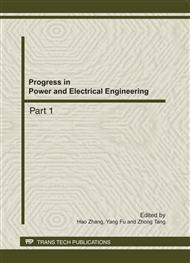p.1126
p.1132
p.1137
p.1144
p.1149
p.1157
p.1161
p.1170
p.1174
Method of Safety Assessment about the Electric Power Supply Company Based on Cloud Gravity Center Theory
Abstract:
Since there are lots of qualitative indexes on safety assessment of the electric power supply company, the issue becomes exigent as how to transform qualitative descriptions to quantitative indication to make the safety assessment more scientific and accurate. Cloud theory which is based on traditional fuzzy set theory and probability theory consider the fuzziness and randomness, providing a powerful method for qualitative and quantitative information combining. This paper introduces Cloud gravity center evaluation in Cloud theory to safety assessment of the electric power supply company, which renders the reasonable transformation from qualitative concepts to quantitative descriptions. The case analysis shows the method is verified and scientific.
Info:
Periodical:
Pages:
1149-1156
Citation:
Online since:
October 2011
Authors:
Price:
Сopyright:
© 2012 Trans Tech Publications Ltd. All Rights Reserved
Share:
Citation:


